The MoD say that HMS Diamond has recently been tested by Tornado, Typhoon and F-16 jets, plus E-3 surveillance aircraft and Voyager tankers in the skies above and around Cyprus.
Now, say the Royal Navy, she is ‘trying her hand’ at anti-submarine warfare aided by one of the Royal Navy’s hunter-killer submarines, HMS Talent.
The destroyer used her Wildcat helicopter – armed with Sting Ray torpedoes – to hunt the Trafalgar-class boat, which in turn sought to get Diamond in her periscope cross-hairs without being noticed, a challenge made harder by the near-glass like state of the Mediterranean according to a release.
“All this proves our ability to deploy, operate and sustain ourselves for however long is required,” said Commander Ben Keith, HMS Diamond’s Commanding Officer.
“Type 45 destroyers are one of the cornerstones of our modern navy and this training enables us to demonstrate our ability to exercise and operate with armed forces both internationally and across defence. Safeguarding the seas ultimately helps keep Britain safe, as our nation depends so much on the oceans for our economy. My ship’s company stand ready always to provide security where it’s needed on behalf of the UK.”
HMS Diamond sailed for the region at the end of September for an autumn deployment conducting security operations in the eastern Mediterranean. Where as the submarine, understood to be HMS Talent, was recently seen loading Tomahawk cruise missiles in Gibraltar.
HMS Talent loading up with TLAMs at Gibraltar @akefford @NavyLookout @RoyalNavy https://t.co/byeETkqBzS
— David Parody (@dparody) September 18, 2018
Launched in 1988, Talent has conducted operations all around the world. The principal role of the ‘hunter-killer’ is to attack ships and other submarines however she also has a land attack capability. The Tomahawk missile, also known as TLAM, allows Royal Navy submarines of the Astute and Trafalgar class to strike at targets on land accurately at a range of around 1,000 miles.
The missile is a highly accurate, GPS-enabled weapon that the US and allied militaries have used more than 2,000 times in combat, and flight-tested 500 times say the manufacturer.



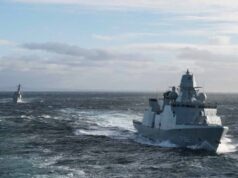
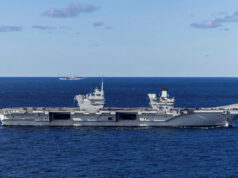
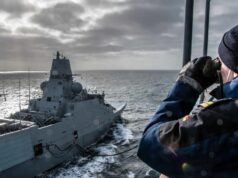
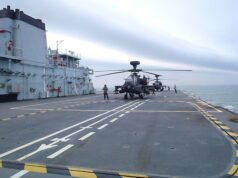

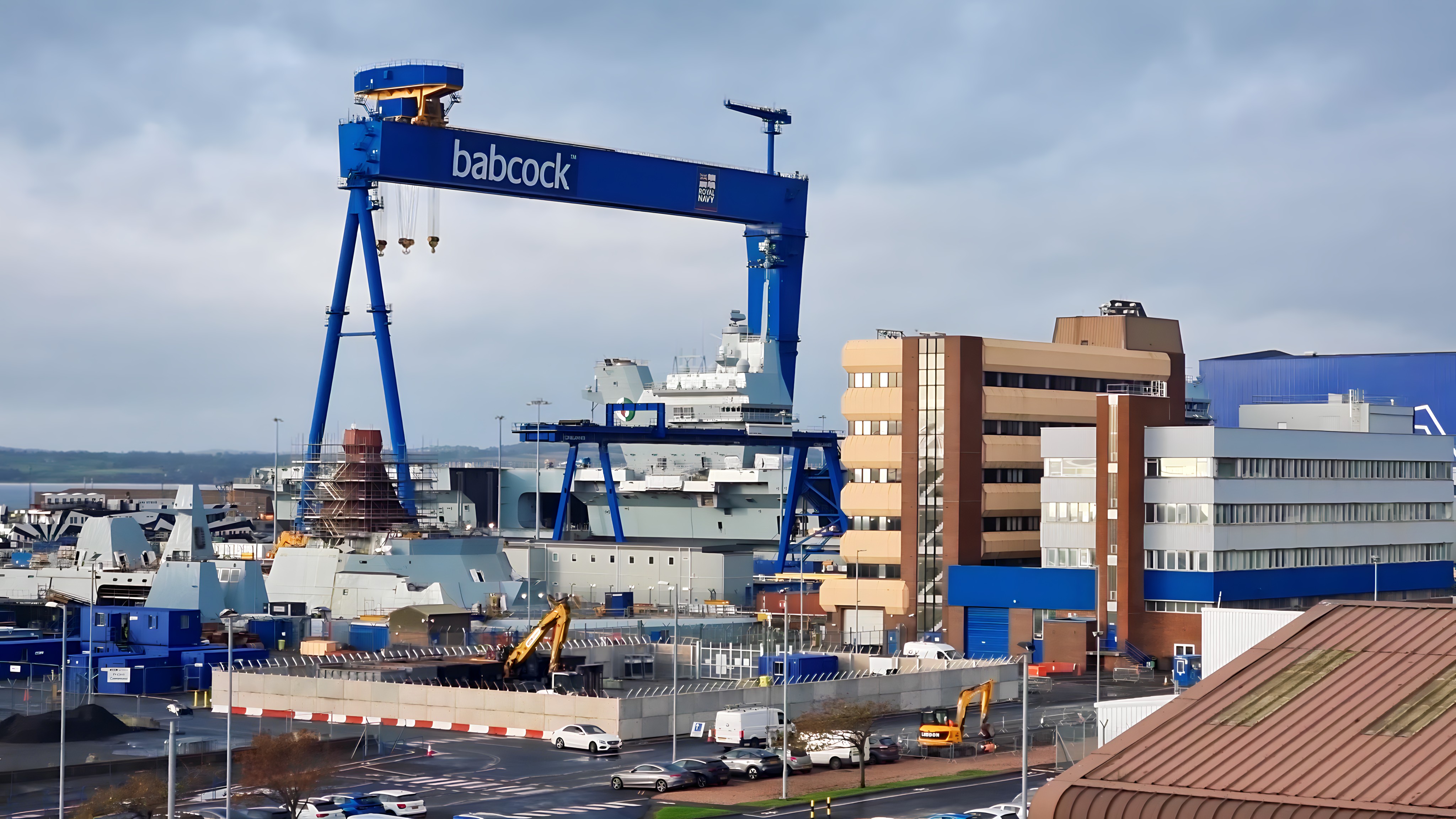
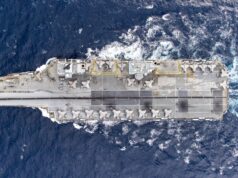

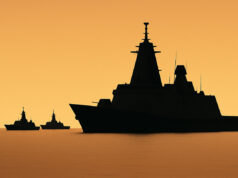
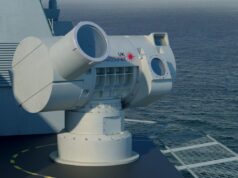

Considering the T45s are supposed to have an acoustic signature of a washing machine with bricks in it. I’d say HMS Talent has no problem finding her.
That was proven to be bullshit. Don’t believe everything you read.
It’s not really a contest between any given good warship and a good hunter killer boat, not just the T45s. Subs are always going to win providing the crew doesn’t make a silly mistake.
Not against a T23 in Quiet State , on electric drive and the emitters off and with a Merlin up.
Do you have a link? Everything I read about them a few years ago said they were very loud. The crew of one of them were even sticking wooden spoons in the hatches to stop them rattling.
Last I heard was that they were performing “within design parameters” in regards to noise generation.
Bear in mind that, having been in service for several years now, the vast majority of teething issues like dodgy hatches will have been corrected
That’s interesting. Daring’s should be quiet as they are IEP. Indeed one of the design drivers was that the class should be quieter than T42.
When was the cement mixer story proven to be hogwash?
Slightly unfair, washing machines are a lot quieter than they used to be don’t you know.
The thing is when the MOD tested the noise levels of the T45 the results were that it exceeded the requirements on noise. The washing machine label is nonsense.
All anyone on HMS Talent needs to do is to go the Marine Traffic website (marinetraffic.com) and search for HMS Diamond. It currently shows her moored on the Rhine in Basel, Switzerland. Quite how she got there is another question.
you are quite right freddo
There are two types of vessels: submarines and targets. I pity HMS Diamond, it wouldn’t really have been a fair contest would it.
I was on a specific class of RN warship that was ignored by a sub during a CASEX.We had deceptive lighting rigged and acoustically they thought we had to be a Merchant Ship. The joys of having a Controlled Pitch Prop that was duff.
Chris if you were being hunted by a couple of Merlins i’m not sure who would be pitying who !
I would imagine it’s more about the use of the dipping sonar to find the sub than which ship accompanies it?
Yes.
What dipping sonar?? Wildcat doesn’t have one.
Or specifically, UK Wildcat don’t have dipping sonar. The ones being supplied to the Phillipines will have.
You are right I forgot that……
Too much reading about the navies of the Far East. The South Korean Wildcats are fitted with them.
There is just too much stuff to keep track of. 🙂
Was the purpose of this excercise to prove that we need better ASW capability? I think we already knew that.
I presume they’re just playing with MFS7000 and cuing Wildcat to a contact to utterly fail to locate using it’s non-existent dipper!
Weren’t T45 due to get the UMS 4110 fitted to Horizon and FREMM?
I presume the Wildcat was there for two reasons – to simulate its role as the delivery vehicle for a Sting Ray torpedo and to use its Seaspray 7000E AESA radar to spot a periscope. In the case of the latter the glass sea state would make periscope detection that much easier.
I don’t know if the T45 would have been trying to detect the sub with passive sonar, which would seem to be a challenge against Trafalgar class with a non-dedicated ASW platform. It seems more likely that it would be using active sonar, i.e. modeling a scenario where a sub is already assumed to be in the area and knows the T45 is there, and then directing the Wildcat onto what are considered appropriate returns.
I see that the USN test fired a Sub-Harpoon missile for the first time in years during the recent Rim-pac exercise and are considering reopening production.
I remember having a discussion with an RN PWO about Sub-Harpoon. He said it was flawed weapon because it revealed where the submarine was and problems with OTH targeting. This confused me somewhat as the range of SH is well within the range of our SSN’s sonars for a positive ID. They always work with the chances of an aircraft being in range. But given the possible number of pingers in a group, the radius of SH’s range from the group, the flying time for say helicopter to get there, and the speed of an SSN then I would say the submarine would have a very good chance of getting away. Certainly as good a chance of getting away if they had shot torpedoes much closer in and the remaining vessels in the groups suddenly going active. But I am just a daft civi and he was a professional so eventually I just deferred.
Can the wildcat not drop sonobuoys? The Korean version has a dipping sonar, maybe the UK skimped again.
I’m curious.
There was an article months ago on UKDJ where we discussed much the same thing, and on that occasion it was also a T45 vs a sub.
What does the 45 have? Any basic sonar or any sort of asw capability?
Or is this training simply for the SSNs benefit or a basic hide and seek visual exercise?
They have mine avoidance sonar. All the ASW kit they would have had (basically I think the same as Horizon class so hull mounted no TAS) got lost a long the way due to funds. Yes T45 is a specialised air defence platform, but all our post war air defence platforms have had some ASW capability. Some say this doesn’t matter. But to me it means they have gone from being an escort to a single purpose ship that itself has to be escorted. Those who say it doesn’t matter would probably say I was being silly if I said our frigates could go to sea without air search radar and missiles. They would then go one to worry about Chinese submarines. The old T42 Sheffield class used to to well at ASW work. What perhaps should have happened is that we should have built 12 Daring-Burke-alikes with all the toys and not bothered with a T26 as such, and then built 8 large second rate frigates. The fleet is what we have.
Thanks Steve.
Horizon’s get Thales UMS 4110 CL sonar and 2× WASS B515/1 single torpedo tubes for MU90 Impact (24 torpedoes carried)
The Hobarts have Ultra Electronics Sonar Systems, hull mounted sonar and towed sonar and 2 x Mark 32 STWS using MU90 (Ultra Electronics is UK company)
Somebody always questions the fitting of STWS as they say these days they are a bit of anachronism. But it appears everybody else fits them. So they are either being conned or are stupid, or we are……… 🙂
The sonar on a T45 is a Medium Frequency active sonar. Its performance is going to be similar to other RN medium frequency sonars fitted to RN Frigates.
It is going to be of a similar performance to 2016/2050 fitted to most past and present modern day RN Frigates (T22 and T23) Because it is an MF sonar it can be used for Mine Avoidance by applying some clever software and transmission frequency alterations.
So with an MF sonar You ping and if the electronics, auto trackers, track extractors, target analysis software and algorithms determine if the returns are a target and only then will itl tell you you have a Poss Sub..
Radars and Sonars on modern combat systems very rarely let you see a blip. Mostly the software and track extractors do the hard work identifying a target.
So No sitting there with a stopwatch timing pings and shouting out “Instantaneous echos sir”( although I have worked with old and bold very experienced Sonar operators (TAS apes) who can still do that stuff)
Although I have not seen a S2091 in action I have done my fair share of CASEX’s on 2016 and 2050 equipped ships and passive tail equipped ships. S 2050 does all the target analysis for you. It displays target course, speed, profile and gives you a % score on a Poss Sub (amongst other things.)
The sonar info then gets passed from the Sonar Set to the command system where you can then conduct an MTLS or STWS attack or direct helos etc to conduct Vectacs. Basically you fly the Lynx/Wildcat over the position of the sub and drop a Sting Ray on it.
Most ASW is active sonar work. Passive work is only done by specialist passive Sub Hunters such as Tail equipped T23s
MFS-7000 is built for torpedo warning and mine avoidance, it is a ‘parking sensor’. It doesn’t compare with the hull sonars in the Burke, Hobart, Horizon. It doesn’t have similar performance to 2050 at all. If a sensor like MFS-7000 is effective against even our last generation SSN’s we are in trouble.
You can look at ASW work in two ways. Yes hunting will be active. But the ship when cruising isn’t going to being pinging away merrily as it traverses the oggin which is most of the time. So I would say most ASW is surveillance not prosecution.
T45 has 2091 bow sonar. However, I suspect the clue is in the statement that she’s been tested with regard to her primary function, which one hopes she passed with flying colours. So, ‘lets just see how she performs against the next likely threat level, lads’. The anouncement strikes me as bit bit smug, so maybe the RN means ‘not bad, chaps’. Further out on a limb, they’re being upgraded to take over the electronic detection role of the Type 22s, so perhaps there is more behind this than meets the eye.
Ahhh. Shaman. I wonder.
T45 sonar as far as I’m aware is only meant to find torpedoes and other objects close to the surface.
So the carrier escort needs an escort? What a waste of money.
Aren’t then45s getting that electronic spy equipment similar to like the 22s used to have?, I’ve always thought the 45s should pack a bigger punch with equipment, it has the room to carry more anti air missiles, or even a few land atack missiles but they never put them in even though it’s fitted for them! And with our limited number of hulls we should have all our 19 frigates and destroyers multitasking, the frigates have anti air missiles, so our destroyers should have atleast 2 torpedo tubes and a better anti submarines capability, what if the wildcats down! What then? Fling a stingray torpedo of the side of the ship lol…
One of the reasons why T22 was stretched was to accommodate Outboard which was a very clever system in its day.
Cam.
Yes. Check out the FIC at Collingwood.
Training facility there opened by 1SL already for Shaman operators.
Links nicely into 5 eyes WAN.
No towed sonar aboard ship and neither dipping sonar nor sonobuoys on Wildcat. There’s a reason Talent had to come within visual range…
does anyone know if our wildcats can be fitted with dipping sonar, relatively easily? as opposed to an almost complete rebuild.
That’s a good question. You never no with aircraft do you?
I know it’s all about false economy and cost saving, but I can’t get past the madness and frankly dangerous thinking of not installing sub surface capability. Even with a huge navy, layered defence means exactly that lots of layers working together. With a small navy, the strength in depth is not there and so every asset has to help out and so that means t45 helping out as last layer for anti surface and frigates for anti air. Let’s hope we don’t have another naval war, as things like this scare me.
Yes. As I said above T45 is now something that has to be escorted. All our post war escorts had a ASW capability, even the single purpose T41 and T61 frigates had ASW capability; it is an essential. It is crazy when you look at the numbers of hulls we have now. It makes you wonder how far out they plan these things. I will have to check the timelines but I wonder if T45 ASW capability was chopped when we were still going to have 13 T26’s? Um. It is interesting to compare all this with SeaCeptor as T26 will have a missile, in the extended range version, that in many ways doesn’t just outperform SeaWolf but at close range outperforms SeaDart too. So with SeaCeptor, SeaViper. F35b, and Crowsnest we have (apart from in numbers) one of the best seaborne air defence in the world. At time when Chinese submarines are ever improving in quality and number. 🙂
Is this a ‘Hunt for Red October’ incident?
Perhaps there are capabilities bolted on that Joe public rightly no knowledge of.
If a foriegn enemy disabled an essential weapon system it is called sabotage. If our government deletes the same simply for cost-saving it should be called treason. The smaller our navy, the more critical it is that all our warships have a comprehensive & effective weapons fit. We are one of the wealthiest economies on the planet, yet we can’t or don’t want to collect the taxes necessary to give our armed forces the kit they need to stand a good chance against our likely opposition.
All our frigates & destroyers should have effective ASW ability, no ifs or buts. As a major maritime trading Island it’s iresponsable for them not to. We have so few DDGs & FFGs we can’t afford less. In any conflict the spurious, vacuous reckoning of poitical accountants will be shown for the madness it really is.
As a slight aside one could look at T26 as something that kills the submarine (archer) and T45 as something that kills the aircraft (archer). The flip side is that T26 can only kill the missile (arrow) with CAMM and T45 can only kill the torpedo (arrow) with SSTD.
Having a single ship that can do all of the archers and arrows would be expensive and slightly pointless in a real situation because of where you physically position your escort screen in a task group.
However, having said this I do sometimes wonder if economies of scale would be better for this nation than ship-design continuity. Maybe T26 is just this. Maybe T26 is designed to be an ASW platform that can ultimately replace a dedicated AAW hull?
I believe I’ve seen it mentioned elsewhere that the replacement for the T45 is expected to be built on the T26 hull, or a development of it. Perhaps the T26 will evolve into a successor that can fulfil both roles simultaneously? (The only trouble is, the government will then use it as an excuse to build half as many ships…)
If you had a large fleet then separating first rate systems into two separate classes makes sense as it does mean the cost of the ship is reduced. But that only works if all hulls contribute something to total defence by having second rate systems to supplement the total effort. So we fit AAW missiles to submarine hunters, and we should fit anti-submarine systems to aircraft shooters. It is all very well having you TAS patrol over the horizon but that leaves a lot of ocean to cover if something has slipped in. The Americans fit first rate systems to their Burkes to both both jobs. Our Continental friends fit adequate second rate weapons for ASW to their AAW frigates.
That “lot of ocean” would be covered by Merlin from a carrier that most of our continental friends do not have.
Yes. Because having a large sensor in the water all the time isn’t preferable to having a small sensor ‘dipped in’ for a limited duration. The answer is the two complement each other.
The extent to which the majority here think the carrier is the answer to everything is slightly amusing.
Nothing to surprise. If not, Trafalger will be claimed to be a very bad submarine.
Trafalger SSN is better than (at least) non-ASW escort, T45. Even if T45 carries S2050 sonar, the result will not change. Even the Wildcat added with FLASH-S dipping sonar, may be the same. Still the SSN has good chance to win, simply because Wildcat with FLASH sonar cannot flight long time. SSN just need to wait for a few hours.
But, I agree better ASW kit is needed for T45, not to hunt enemy sub in solo, but to contribute to ASW as a fleet. I guess, joining the multi-static ASW world by adding CAPTAS-2, or even CAPTAS-1 will help a lot, to say “this region is free of enemy subs” or not.
Just an aside on the lack of ASW on T45; mustn’t totally ignore the small issue that they can ship Merlin.
If it wasn’t for the small issue that we are running out of Merlin too. The ship provides area surveillance and then the helicopter gets sent off to narrow down the target’s location. If you have a squadron of ASW helicopters aboard a carrier they may perform screening operations. But the true screen is provided the escorts in direct vicinity of the HVU’s. Helicopters are additional. (A submarine tracking a group will know where the ships are approximately. But a helicopter has much greater freedom of movement.) A T45 with out a decent hull mounted sonar like 2050 and just a helicopter isn’t optimal.
I have said this a few times, T31 should be fresh builds based on the T23 hull with updated layout and equipment. That way we get a proven ASW hullform that we own already and dont need to pay IP on.
T26 is supposedly the best hull form from an ASW point of view on the planet, it therefore makes sense that we use this for T45 replacement (they are virtually identical in size, tonnage etc).
It seems to me that with a slight adjustment (mid ship Mk41 silo in addition to front silos + improved Radar) we take T26 to the next level and it would become a highly capable AAW and ASW asset – at which point we build 13 (similar to the new 8+6) – this then leaves even more funding (£7bn if we assume 6 T26 cost allocation) to build a large fleet of T31’s (25 units is my goal) that replace the 6 T23, mine fleet (15) and OPV’s (5).
We then have a really good fleet, that stands a chance against subs (as per Gunbusters comments) and re-use an excellent hull design along the way.
The USN is getting serious about high end ASW work again. They’re activating a submarine “Top Gun” unit. Wonder if they’ll permanently assign a couple of LA class boats to it instead of decomming them? I’m sure the RN sub force would be chomping at the dive planes to show their stuff.
https://news.usni.org/2018/11/08/submarine-forces-china-russia
Cheers!